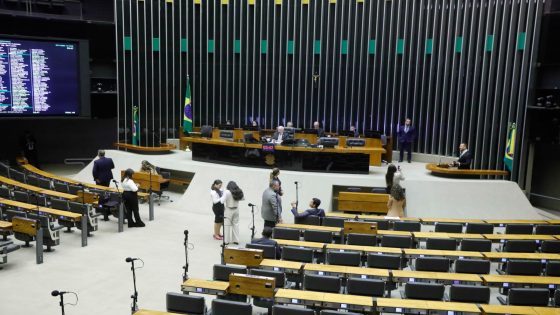A new proposal for a semipresidential government system has been submitted to Brazil’s Chamber of Deputies on February 6, 2025. Presented by deputies Luiz Carlos Hauly and Lafayette Andrada, the proposal has garnered support from 181 lawmakers. This significant move reflects a shift in Brazil’s political landscape and raises questions about the future of governance in the country.
- New semipresidentialism proposal submitted to Congress.
- 181 parliamentary signatures support the PEC.
- Opposition from PT due to Lula's stance.
- Centrão parties dominate the signature count.
- Semipresidentialism aims to reduce political crises.
- Proposal requires approval from both chambers.
What does this mean for Brazil? The proposal aims to create a more balanced power structure, potentially reducing political crises. However, will it receive the necessary support to move forward?
Brazil’s Semipresidential Proposal: What It Means for Governance
Could Brazil’s new semipresidential proposal change the way the government operates? This system divides power between a president and a prime minister, allowing for more flexible governance. The proposal aims to prevent prolonged political crises, similar to those experienced during the impeachments of past presidents.
Key Features of the Semipresidential System in Brazil
The proposed semipresidential system includes several key features that could reshape Brazilian politics:
- Division of powers between the president and a prime minister.
- The prime minister is chosen by Congress, allowing for more responsive governance.
- Flexibility in leadership, as the prime minister can be replaced without impeachment.
- Aims to prevent institutional crises that have historically plagued Brazil.
Potential Benefits of the New Governance Model
What advantages does a semipresidential system offer? Proponents argue that it can enhance stability and efficiency in governance. By allowing for a prime minister who can be easily replaced, the government can adapt quickly to changing political landscapes. This could lead to a more responsive and accountable administration.
Challenges and Opposition to the Proposal
Despite its potential benefits, the proposal faces challenges. Some lawmakers, particularly from the PT party, have withheld support due to uncertainty about President Lula’s stance. Additionally, concerns arise that the new system may diminish the power of parties with presidential candidates, leading to resistance from various political factions.
In conclusion, Brazil’s semipresidential proposal marks a significant shift in its political framework. As lawmakers debate its merits, the outcome could have lasting effects on governance and political stability in the country.
































